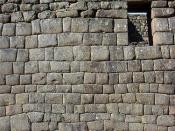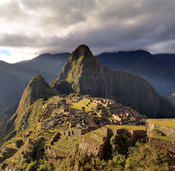World History AP
1 November 2002
Similarities & Differences of Societies of Central and South America
The Central and South American societies evolved separately, but both resulted in early complex societies. The Mesoamerican societies of the Toltecs, Mayans, and the Mexica (Aztecs), maintained an empire of regional conquered states. A moist environment of Mesoamerica led to the development of such practices of chinampas. The tightly centralized government of the Incas, in conjunction with the intricate system of government and communication led to the development of this culture. The Mayan and Inca process of evolution of an empire was different, but the result of a centralized government and cultural domination was a universal outcome.
Mesoamerican civilizations focused heavily on taking advantage of their surroundings to build an effective capital. Fertile farmland from Lake Texcoco resulted in an agricultural society. This in turn led to the rapid growth and expansion of the empire.
As a result of this prosperity, this led the Mesoamerican people to expand their reign and impose other regions to pay them tribute. The Mesoamerican societies typically ruled from one city, and just placed taxation on the conquered lands. Thus, the Mesoamerican peoples had a centralized government. A large, powerful army and good defenses led to their military success. With the success of conquering, and the large temples and structures; in combination with an expansive trade system, the Mesoamericans earned great cultural influence. However, the Mesoamerican people did not learn how to effectively govern these surrounding lands. The Incas of South America learned how to conquer and govern.
The Incas lived on the western coast of South America. Located mostly on the Andes Mountains they were not a grain agricultural society. The Inca peoples had to trade for grain with people at lower elevations. The trade interaction led to...


